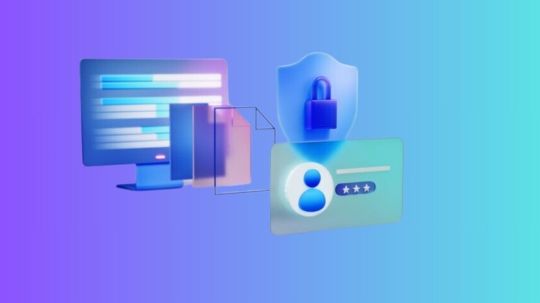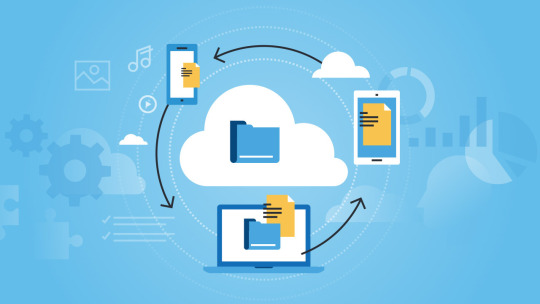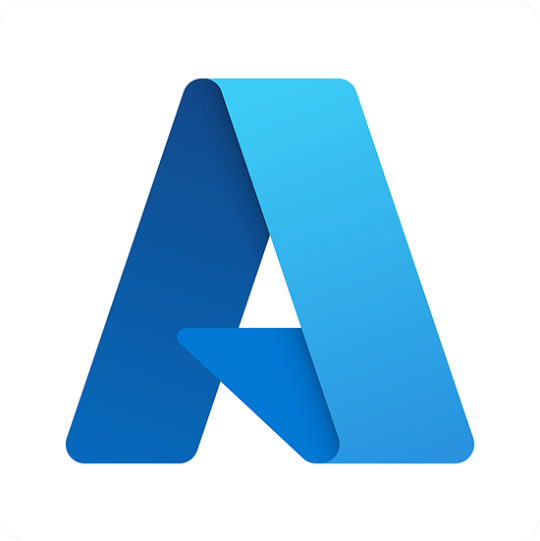#Microsoft Azure AI
Explore tagged Tumblr posts
Text
Azure AD (Active Directory) Now Microsoft Entra ID: Pricing, Features, Updates

Stay ahead with Microsoft's latest cloud innovation! Azure AD is now Microsoft Entra ID, continuing the tradition of renaming to enhance clarity and functionality.
What You'll Find:
What is Microsoft Entra ID?: A cloud-based identity and access management service.
Key Features: Access Management, Identity Protection, Governance, Privileged Managed Identities, and B2B/B2C Services.
Pricing Plans: Explore the free, P1, and P2 plans and their benefits.
Why It Matters: Microsoft Entra ID ensures secure and efficient access to IT resources, whether internal or external. With enhanced features and flexible pricing, it's designed to meet diverse business needs.
Read More! Dive into our blog for a detailed guide on Microsoft Entra ID. Stay informed and make the most of Microsoft's cloud services.
Contact ECF Data for Expert Guidance Need help navigating Microsoft Entra ID? Contact ECF Data for a free Q&A session and expert licensing advice. Click below to connect with our senior negotiation experts.
Read the Full Blog: Azure AD (Active Directory) Now Microsoft Entra ID: Pricing, Features, Updates
Contact ECF Data
Unlock the potential of Microsoft Entra ID today!
#azure services#azure ai#Azure AI Services#azure openai#azure openai service#azure open ai#azure ai studio#microsoft azure ai#azure openai pricing#azure ai services#azure ai ml services
1 note
·
View note
Text
The decision follows an employee-led campaign called No Azure for Apartheid, a reference to Microsoft’s AI program, demanding that Microsoft sever contracts and partnerships with the Israeli military and government.
#israel is committing genocide#Free Palestine#Palestine#microsoft#azure#minecraft#xbox#game pass#tech#technology#gaming#games#boycott#call of duty#apartheid#No Azure for Apartheid#AI#genocide
3 notes
·
View notes
Text
Microsoft Unveils Majorana 1: A Quantum Computing Breakthrough

Microsoft has announced a major advancement in quantum computing with the launch of its first quantum computing chip, Majorana 1. This breakthrough follows nearly two decades of research in the field and is a crucial step toward the company's goal of developing large-scale quantum computers. The company claims that in order to create this chip, it had to engineer an entirely new state of matter, which it refers to as a topological state. This new state of matter is key to the stability and efficiency of quantum computing, which has long faced challenges due to the fragile nature of qubits.
Topological Qubits – The chip contains eight topological qubits, which provide higher stability compared to conventional qubits used by competitors like Google and IBM.Exotic Material Composition – The chip is built using indium arsenide (a semiconductor) and aluminum (a superconductor), helping to create the necessary environment for quantum behavior.Atom-by-Atom Engineering – Microsoft had to precisely align atoms to achieve the required conditions for a topological state, making this a significant materials science achievement.
#Microsoft#QuantumComputing#Majorana1#TopologicalState#TechInnovation#Azure#AI#Superconductors#Research#CloudComputing
3 notes
·
View notes
Text
06. März 2025
Die Transkriptionssoftware hat zwar Manieren, aber vertuscht dafür die eigene Inkompetenz
Als ich gerade Marlene Etschmanns Notiz über die manierliche Transkriptionsengine von Microsoft Teams lese, fällt mir ein, dass ich immer noch nicht alle meine im letzten Sommer durchgeführten umfangreichen Interviews für mein Forschungsprojekt neu transkribiert habe. Genau wie Marlene habe ich diese Interviews mit Microsoft Teams geführt und dabei die integrierte Aufzeichnung und Transkription genutzt. Die Funktion ist auf den ersten Blick und für viele Fälle wirklich sehr nützlich. Wenn man allerdings auf eine gewisse Akkuratheit angewiesen ist, muss man die Transkription später entweder sehr genau manuell korrigieren oder einfach in einem besseren Tool nochmal machen lassen.
Die Gründe dafür liegen in der merkwürdigen Angewohnheit von Teams, bei (leider sehr häufig vorkommenden) nicht vollständig erkannten Wörtern oder Silben anscheinend den gesamten Satz nochmal neu auf vermeintliche Sinnhaftigkeit zu prüfen. Nein, meine Gesprächspartnerin hat nicht Blumenjournalismus studiert und Sätze wie "Das ist eine." sind an der Tagesordnung. Insgesamt lesen sich die Transkripte, als hätten alle meine Gesprächspartnerinnen völlig sinnloses Zeug gestammelt. Man kann das gut bei der Live-Transkription beobachten, wenn ein falsch verstandenes Wort am Satzende plötzlich den bisher bereits korrekt niedergeschriebenen Satz verändert, sodass er in sich konsistent mit dem falsch verstandenen Wort ist, nur leider oft das Gegenteil von dem aussagt, was eigentlich gesagt wurde. Oder gerne auch mal etwas im aktuellen Kontext überhaupt nicht Sinnhaftes, der Korrekturkontext reicht also nicht nennenswert weit in die Vergangenheit zurück, oder tut das, aber das System fällt dann auf die eigenen Sinnverdrehungen herein und verschlimmert sich dann über die Zeit sogar noch. So genau will ich das nicht wissen, das dürfen gerne andere erforschen.
Ich habe Perplexity.ai gefragt, welche Engine Microsoft hier verwendet, weil ich ähnliche sinnentstellende Fehler in dieser Dichte von meinen kläglichen Versuchen mit der lokal ausgeführten Speech-to-Text-Engine Whisper kenne, jedoch bekam ich folgende unkritisch aus dem Microsoftschen Marketing-Sprech übernommene Antwort:
Tatsächlich nutzt Microsoft seine eigene fortschrittliche Spracherkennungstechnologie, die Teil der Azure AI Services ist [Quellenlink]. Diese Technologie basiert auf jahrelanger Forschung und Entwicklung von Microsoft im Bereich der künstlichen Intelligenz und Spracherkennung.
Wenn sinnentstellende Änderungen ganzer Sätze hin zu plausiblen und in sich konsistenten, aber leider inhaltlich nicht zutreffenden Variationen Fortschritt sein soll, verzichte ich lieber. Zudem ist auch nicht vorgesehen, dass Teams bei Unklarheiten eine Markierung hinterlässt, sodass man leider letztlich das gesamte Interview nochmal selber anhören und gleichzeitig kritisch mitlesen muss, um diese Fehler zu entdecken. Das ist bei der hohen Fehlerdichte allemal für meine Forschungsdaten indiskutabel. Aber auch für die eigentlich beworbene Funktion der Liveuntertitelung geschäftlicher Meetings – gerne mit einer automatischen Übersetzung garniert – kann ich mir vorstellen, dass hier eine vermeintliche Verhandlungssicherheit suggeriert wird, die am Ende nicht eingehalten werden kann.
Im Ergebnis lade ich dann die Videos in Adobe Premiere und führe dort eine lokale Transkription durch. Die ist schon ohne Nachbearbeitung um Klassen besser als das, was aus Teams herausgefallen ist. Viel besser ist aber der Workflow zur Korrektur, denn Premiere markiert Unklarheiten freundlicherweise, sodass man schnell und fokussiert da durch springen kann, wenn man zeitlich knapp aufgestellt ist.
Und das beste daran ist auch noch, dass die Transkription tatsächlich lokal durchgeführt wird, was für mein erstes Video von einer guten Stunde Länge bei mir keine 10 Minuten gedauert hat. Dabei verlassen meine Forschungsdaten meinen Einflussbereich nicht, für die ich – von Microsoft-Servern in Irland explizit abgesehen – Vertraulichkeit zugesagt hatte. Das gebietet aus meiner Sicht schon die sogenannte gute wissenschaftliche Praxis.
Ich bin ohnehin erstaunt, wie viele Kolleginnen und Kollegen aus der Forschung völlig sorglos und oft unter klarer Missachtung von Datenschutzregeln ihre Forschungsdaten in irgendwelche Cloud-KI-Systeme einspeisen, weil die ja so nützlich sind. Mal von dem kleinen Problemchen abgesehen, dass deren Ergebnisse alle schlicht nicht zuverlässig und vertrauenswürdig sind. Und dem anderen kleinen Problemchen, dass die Daten nun in eine nicht überschaubare Riesenmaschine eingespeist wurden, wo man jegliche Kontrolle an der Tür abgibt. Gute wissenschaftliche Praxis, wissenschon. 🙈
(Gregor Meyer)
#Gregor Meyer#Audiotranskription#Transkription#Microsoft Teams#Adobe Premiere#Wissenschaft#Forschung#Datenschutz#KI#wissenschaftliches Arbeiten#Perplexity.ai#Halluzination#Azure AI Services#Perplexity#LLM
5 notes
·
View notes
Text

Microsoft Azure and DeepSeek's R1 Model (link in the bio)
#ai#ai model#ai tools#ai generated#ai news#chatgpt#ai companies#microsoft azure#microsoft ai#deepseek#deepseek r1
3 notes
·
View notes
Text
Data Zones Improve Enterprise Trust In Azure OpenAI Service

The trust of businesses in the Azure OpenAI Service was increased by the implementation of Data Zones.
Data security and privacy are critical for businesses in today’s quickly changing digital environment. Microsoft Azure OpenAI Service provides strong enterprise controls that adhere to the strictest security and regulatory requirements, as more and more businesses use AI to spur innovation. Anchored on the core of Azure, Azure OpenAI may be integrated with the technologies in your company to assist make sure you have the proper controls in place. Because of this, clients using Azure OpenAI for their generative AI applications include KPMG, Heineken, Unity, PWC, and more.
With over 60,000 customers using Azure OpenAI to build and scale their businesses, it is thrilled to provide additional features that will further improve data privacy and security capabilities.
Introducing Azure Data Zones for OpenAI
Data residency with control over data processing and storage across its current 28 distinct locations was made possible by Azure OpenAI from Day 0. The United States and the European Union now have Azure OpenAI Data Zones available. Historically, variations in model-region availability have complicated management and slowed growth by requiring users to manage numerous resources and route traffic between them. Customers will have better access to models and higher throughput thanks to this feature, which streamlines the management of generative AI applications by providing the flexibility of regional data processing while preserving data residency within certain geographic bounds.
Azure is used by businesses for data residency and privacy
Azure OpenAI’s data processing and storage options are already strong, and this is strengthened with the addition of the Data Zones capability. Customers using Azure OpenAI can choose between regional, data zone, and global deployment options. Customers are able to increase throughput, access models, and streamline management as a result. Data is kept at rest in the Azure region that you have selected for your resource with all deployment choices.
Global deployments: With access to all new models (including the O1 series) at the lowest cost and highest throughputs, this option is available in more than 25 regions. The global backbone of the Azure resource guarantees optimal response times, and data is stored at rest within the customer-selected
Data Zones: Introducing Data Zones, which offer cross-region load balancing flexibility within the customer-selected geographic boundaries, to clients who require enhanced data processing assurances while gaining access to the newest models. All Azure OpenAI regions in the US are included in the US Data Zone. All Azure OpenAI regions that are situated inside EU member states are included in the European Union Data Zone. The upcoming month will see the availability of the new Azure Data Zones deployment type.
Regional deployments: These guarantee processing and storage take place inside the resource’s geographic boundaries, providing the highest degree of data control. When considering Global and Data Zone deployments, this option provides the least amount of model availability.
Extending generative AI apps securely using your data
Azure OpenAI allows you to extend your solution with your current data storage and search capabilities by integrating with hundreds of Azure and Microsoft services with ease. Azure AI Search and Microsoft Fabric are the two most popular extensions.
For both classic and generative AI applications, Azure AI search offers safe information retrieval at scale across customer-owned content. This keeps Azure’s scale, security, and management while enabling document search and data exploration to feed query results into prompts and ground generative AI applications on your data.
Access to an organization’s whole multi-cloud data estate is made possible by Microsoft Fabric’s unified data lake, OneLake, which is arranged in an easy-to-use manner. Maintaining corporate data governance and compliance controls while streamlining the integration of data to power your generative AI application is made easier by consolidating all company data into a single data lake.
Azure is used by businesses to ensure compliance, safety, and security
Content Security by Default
Prompts and completions are screened by a group of classification models to identify and block hazardous content, and Azure OpenAI is automatically linked with Azure AI Content Safety at no extra cost. The greatest selection of content safety options is offered by Azure, which also has the new prompt shield and groundedness detection features. Clients with more stringent needs can change these parameters, such as harm severity or enabling asynchronous modes to reduce delay.
Entra ID provides secure access using Managed Identity
In order to provide zero-trust access restrictions, stop identity theft, and manage resource access, Microsoft advises protecting your Azure OpenAI resources using the Microsoft Entra ID. Through the application of least-privilege concepts, businesses can guarantee strict security guidelines. Furthermore strengthening security throughout the system, Entra ID does away with the requirement for hard-coded credentials.
Furthermore, Managed Identity accurately controls resource rights through a smooth integration with Azure role-based access control (RBAC).
Customer-managed key encryption for improved data security
By default, the information that Azure OpenAI stores in your subscription is encrypted with a key that is managed by Microsoft. Customers can use their own Customer-Managed Keys to encrypt data saved on Microsoft-managed resources, such as Azure Cosmos DB, Azure AI Search, or your Azure Storage account, using Azure OpenAI, further strengthening the security of your application.
Private networking offers more security
Use Azure virtual networks and Azure Private Link to secure your AI apps by separating them from the public internet. With this configuration, secure connections to on-premises resources via ExpressRoute, VPN tunnels, and peer virtual networks are made possible while ensuring that traffic between services stays inside Microsoft’s backbone network.
The AI Studio’s private networking capability was also released last week, allowing users to utilize its Studio UI’s powerful “add your data” functionality without having to send data over a public network.
Dedication to Adherence
It is dedicated to helping its clients in all regulated areas, such as government, finance, and healthcare, meet their compliance needs. Azure OpenAI satisfies numerous industry certifications and standards, including as FedRAMP, SOC 2, and HIPAA, guaranteeing that businesses in a variety of sectors can rely on their AI solutions to stay compliant and safe.
Businesses rely on Azure’s dependability at the production level
GitHub Copilot, Microsoft 365 Copilot, Microsoft Security Copilot, and many other of the biggest generative AI applications in the world today rely on the Azure OpenAI service. Customers and its own product teams select Azure OpenAI because it provide an industry-best 99.9% reliability SLA on both Provisioned Managed and Paygo Standard services. It is improving that further by introducing a new latency SLA.
Announcing Provisioned-Managed Latency SLAs as New Features
Ensuring that customers may scale up with their product expansion without sacrificing latency is crucial to maintaining the caliber of the customer experience. It already provide the largest scale with the lowest latency with its Provisioned-Managed (PTUM) deployment option. With PTUM, it is happy to introduce explicit latency service level agreements (SLAs) that guarantee performance at scale. In the upcoming month, these SLAs will go into effect. Save this product newsfeed to receive future updates and improvements.
Read more on govindhtech.com
#DataZonesImprove#EnterpriseTrust#OpenAIService#Azure#DataZones#AzureOpenAIService#FedRAMP#Microsoft365Copilot#improveddatasecurity#data#ai#technology#technews#news#AzureOpenAI#AzureAIsearch#Microsoft#AzureCosmosDB#govindhtech
2 notes
·
View notes
Text
Inteligência Artificial - Cooperação entre NVIDIA e Microsoft

A Microsoft e a NVIDIA anunciaram integra��ões importantes no campo da Inteligência Artificial generativa para empresas em todo o mundo. Saiba mais em: https://news.microsoft.com/2024/03/18/microsoft-and-nvidia-announce-major-integrations-to-accelerate-generative-ai-for-enterprises-everywhere/
______ Direitos de imagem: © Microsoft (via https://news.microsoft.com/)
#MSFT#Microsoft#NVDA#NVIDIA#IA#AI#MicrosoftAzure#Azure#Chip#SuperChip#GraceBlackwell#Omniverse#Copilot#AzureAI#Empresas#Business#enterprise#developer#healthcare#digitalization#europe#world#technology#future#futurenow
2 notes
·
View notes
Text
Demystifying Microsoft Azure Cloud Hosting and PaaS Services: A Comprehensive Guide
In the rapidly evolving landscape of cloud computing, Microsoft Azure has emerged as a powerful player, offering a wide range of services to help businesses build, deploy, and manage applications and infrastructure. One of the standout features of Azure is its Cloud Hosting and Platform-as-a-Service (PaaS) offerings, which enable organizations to harness the benefits of the cloud while minimizing the complexities of infrastructure management. In this comprehensive guide, we'll dive deep into Microsoft Azure Cloud Hosting and PaaS Services, demystifying their features, benefits, and use cases.
Understanding Microsoft Azure Cloud Hosting
Cloud hosting, as the name suggests, involves hosting applications and services on virtual servers that are accessed over the internet. Microsoft Azure provides a robust cloud hosting environment, allowing businesses to scale up or down as needed, pay for only the resources they consume, and reduce the burden of maintaining physical hardware. Here are some key components of Azure Cloud Hosting:
Virtual Machines (VMs): Azure offers a variety of pre-configured virtual machine sizes that cater to different workloads. These VMs can run Windows or Linux operating systems and can be easily scaled to meet changing demands.
Azure App Service: This PaaS offering allows developers to build, deploy, and manage web applications without dealing with the underlying infrastructure. It supports various programming languages and frameworks, making it suitable for a wide range of applications.
Azure Kubernetes Service (AKS): For containerized applications, AKS provides a managed Kubernetes service. Kubernetes simplifies the deployment and management of containerized applications, and AKS further streamlines this process.

Exploring Azure Platform-as-a-Service (PaaS) Services
Platform-as-a-Service (PaaS) takes cloud hosting a step further by abstracting away even more of the infrastructure management, allowing developers to focus primarily on building and deploying applications. Azure offers an array of PaaS services that cater to different needs:
Azure SQL Database: This fully managed relational database service eliminates the need for database administration tasks such as patching and backups. It offers high availability, security, and scalability for your data.
Azure Cosmos DB: For globally distributed, highly responsive applications, Azure Cosmos DB is a NoSQL database service that guarantees low-latency access and automatic scaling.
Azure Functions: A serverless compute service, Azure Functions allows you to run code in response to events without provisioning or managing servers. It's ideal for event-driven architectures.
Azure Logic Apps: This service enables you to automate workflows and integrate various applications and services without writing extensive code. It's great for orchestrating complex business processes.
Benefits of Azure Cloud Hosting and PaaS Services
Scalability: Azure's elasticity allows you to scale resources up or down based on demand. This ensures optimal performance and cost efficiency.
Cost Management: With pay-as-you-go pricing, you only pay for the resources you use. Azure also provides cost management tools to monitor and optimize spending.
High Availability: Azure's data centers are distributed globally, providing redundancy and ensuring high availability for your applications.
Security and Compliance: Azure offers robust security features and compliance certifications, helping you meet industry standards and regulations.
Developer Productivity: PaaS services like Azure App Service and Azure Functions streamline development by handling infrastructure tasks, allowing developers to focus on writing code.
Use Cases for Azure Cloud Hosting and PaaS
Web Applications: Azure App Service is ideal for hosting web applications, enabling easy deployment and scaling without managing the underlying servers.
Microservices: Azure Kubernetes Service supports the deployment and orchestration of microservices, making it suitable for complex applications with multiple components.
Data-Driven Applications: Azure's PaaS offerings like Azure SQL Database and Azure Cosmos DB are well-suited for applications that rely heavily on data storage and processing.
Serverless Architecture: Azure Functions and Logic Apps are perfect for building serverless applications that respond to events in real-time.
In conclusion, Microsoft Azure's Cloud Hosting and PaaS Services provide businesses with the tools they need to harness the power of the cloud while minimizing the complexities of infrastructure management. With scalability, cost-efficiency, and a wide array of services, Azure empowers developers and organizations to innovate and deliver impactful applications. Whether you're hosting a web application, managing data, or adopting a serverless approach, Azure has the tools to support your journey into the cloud.
#Microsoft Azure#Internet of Things#Azure AI#Azure Analytics#Azure IoT Services#Azure Applications#Microsoft Azure PaaS
2 notes
·
View notes
Text
But I’m sure they’re being totally responsible with AI.
4 notes
·
View notes
Text
Discover the New Microsoft Entra ID (formerly Azure AD): Pricing, Features, and Updates!

Stay ahead with Microsoft's latest cloud innovation! Azure AD is now Microsoft Entra ID, continuing the tradition of renaming to enhance clarity and functionality.
What You'll Find:
What is Microsoft Entra ID?: A cloud-based identity and access management service.
Key Features: Access Management, Identity Protection, Governance, Privileged Managed Identities, and B2B/B2C Services.
Pricing Plans: Explore the free, P1, and P2 plans and their benefits.
Why It Matters: Microsoft Entra ID ensures secure and efficient access to IT resources, whether internal or external. With enhanced features and flexible pricing, it's designed to meet diverse business needs.
Read More! Dive into our blog for a detailed guide on Microsoft Entra ID. Stay informed and make the most of Microsoft's cloud services.
Contact ECF Data for Expert Guidance Need help navigating Microsoft Entra ID? Contact ECF Data for a free Q&A session and expert licensing advice. Click below to connect with our senior negotiation experts.
Read the Full Blog: Azure AD (Active Directory) Now Microsoft Entra ID: Pricing, Features, Updates
Contact ECF Data
Unlock the potential of Microsoft Entra ID today!
#azure ai#azure openai#azure openai service#azure open ai#azure ai studio#microsoft azure ai#azure openai pricing#azure ai services#azure ai ml services
1 note
·
View note
Text
【ITインフラの第一歩!】Azureアカウントとは?Microsoft Entra IDと連携してクラウドの扉を開こう!
0 notes
Text
🤖 Discover how Xrm.Copilot is revolutionizing Dynamics 365 CE with AI! Learn about its key capabilities, integration with the Xrm API, and how developers can build smarter model-driven apps. Boost CRM productivity with conversational AI. #Dynamics365 #Copilot #PowerPlatform #XrmAPI #CRM #AI
#AI in Dynamics#Azure OpenAI.#CRM AI#CRM Automation#dataverse#Dynamics 365 CE#Low-Code AI#Microsoft Copilot#Model-Driven Apps#Power Platform#Xrm API#Xrm.Copilot
0 notes
Text

大公開! ソフトバンクで生成AIどう活用する?! 社内GPT活用事例4選
#各業界の未来#DX#azure#デジタルトランスフォーメーション#generativeai#効率化#社内利用#社内活用#生成AI#セキュリティ#chatgpt#顧客窓口#チャットgpt#開通部門#ビジネス#国際借用#プロンプト#教育#ソフトバンク#アセスメント#SoftBank#AzureOpenAIService#スマートフォン#addyourdata#スマホ#microsoft#デジタル#マイクロソフト#デジタル化#教育部門
0 notes
Text
OpenAI Uses Google’s AI Chips to Power ChatGPT Shift
Introduction: OpenAI Rethinks Infrastructure with Google AI Chips OpenAI AI chips, the company behind ChatGPT, is undergoing a significant infrastructure shift by using Google’s AI chips—specifically Tensor Processing Units (TPUs)—to power its AI models. Previously dependent on Nvidia GPUs and Microsoft’s Azure cloud, this move signals OpenAI’s growing need for diversified and scalable compute…
#AI 2025 news#AI chips#AI infrastructure#Anthropic#ChatGPT#cloud tech#Google Cloud#Google TPUs#inference computing#Microsoft Azure#Nvidia GPUs#OpenAI#Safe Superintelligence#Sam Altman#TPU vs GPU
0 notes
Text
Importance Of Microsoft Azure Open AI Certification
Unlock the future of AI with the Microsoft Azure Open AI Certification from Trainomart. This in-demand certification validates your skills in deploying advanced AI models using Microsoft Azure's cutting-edge OpenAI services. Gain expertise in AI-driven solutions, enhance your cloud proficiency, and boost your career prospects in today’s competitive tech landscape. Trainomart’s tailored training empowers professionals to master the integration of AI with Azure, making the Microsoft Azure Open AI certification a powerful credential in the evolving digital world.
0 notes
Text
From Firewall to Encryption: The Full Spectrum of Data Security Solutions

In today’s digitally driven world, data is one of the most valuable assets any business owns. From customer information to proprietary corporate strategies, the protection of data is crucial not only for maintaining competitive advantage but also for ensuring regulatory compliance and customer trust. As cyber threats grow more sophisticated, companies must deploy a full spectrum of data security solutions — from traditional firewalls to advanced encryption technologies — to safeguard their sensitive information.
This article explores the comprehensive range of data security solutions available today and explains how they work together to create a robust defense against cyber risks.
Why Data Security Matters More Than Ever
Before diving into the tools and technologies, it’s essential to understand why data security is a top priority for organizations worldwide.
The Growing Threat Landscape
Cyberattacks have become increasingly complex and frequent. From ransomware that locks down entire systems for ransom to phishing campaigns targeting employees, and insider threats from negligent or malicious actors — data breaches can come from many angles. According to recent studies, millions of data records are exposed daily, costing businesses billions in damages, legal penalties, and lost customer trust.
Regulatory and Compliance Demands
Governments and regulatory bodies worldwide have enacted stringent laws to protect personal and sensitive data. Regulations such as GDPR (General Data Protection Regulation), HIPAA (Health Insurance Portability and Accountability Act), and CCPA (California Consumer Privacy Act) enforce strict rules on how companies must safeguard data. Failure to comply can result in hefty fines and reputational damage.
Protecting Brand Reputation and Customer Trust
A breach can irreparably damage a brand’s reputation. Customers and partners expect businesses to handle their data responsibly. Data security is not just a technical requirement but a critical component of customer relationship management.
The Data Security Spectrum: Key Solutions Explained
Data security is not a single tool or tactic but a layered approach. The best defense employs multiple technologies working together — often referred to as a “defense-in-depth” strategy. Below are the essential components of the full spectrum of data security solutions.
1. Firewalls: The First Line of Defense
A firewall acts like a security gatekeeper between a trusted internal network and untrusted external networks such as the Internet. It monitors incoming and outgoing traffic based on pre-established security rules and blocks unauthorized access.
Types of Firewalls:
Network firewalls monitor data packets traveling between networks.
Host-based firewalls operate on individual devices.
Next-generation firewalls (NGFW) integrate traditional firewall features with deep packet inspection, intrusion prevention, and application awareness.
Firewalls are fundamental for preventing unauthorized access and blocking malicious traffic before it reaches critical systems.
2. Intrusion Detection and Prevention Systems (IDS/IPS)
While firewalls filter traffic, IDS and IPS systems detect and respond to suspicious activities.
Intrusion Detection Systems (IDS) monitor network or system activities for malicious actions and send alerts.
Intrusion Prevention Systems (IPS) not only detect but also block or mitigate threats in real-time.
Together, IDS/IPS adds an extra layer of vigilance, helping security teams quickly identify and neutralize potential breaches.
3. Endpoint Security: Protecting Devices
Every device connected to a network represents a potential entry point for attackers. Endpoint security solutions protect laptops, mobile devices, desktops, and servers.
Antivirus and Anti-malware: Detect and remove malicious software.
Endpoint Detection and Response (EDR): Provides continuous monitoring and automated response capabilities.
Device Control: Manages USBs and peripherals to prevent data leaks.
Comprehensive endpoint security ensures threats don’t infiltrate through vulnerable devices.
4. Data Encryption: Securing Data at Rest and in Transit
Encryption is a critical pillar of data security, making data unreadable to unauthorized users by converting it into encoded text.
Encryption at Rest: Protects stored data on servers, databases, and storage devices.
Encryption in Transit: Safeguards data traveling across networks using protocols like TLS/SSL.
End-to-End Encryption: Ensures data remains encrypted from the sender to the recipient without exposure in between.
By using strong encryption algorithms, even if data is intercepted or stolen, it remains useless without the decryption key.
5. Identity and Access Management (IAM)
Controlling who has access to data and systems is vital.
Authentication: Verifying user identities through passwords, biometrics, or multi-factor authentication (MFA).
Authorization: Granting permissions based on roles and responsibilities.
Single Sign-On (SSO): Simplifies user access while maintaining security.
IAM solutions ensure that only authorized personnel can access sensitive information, reducing insider threats and accidental breaches.
6. Data Loss Prevention (DLP)
DLP technologies monitor and control data transfers to prevent sensitive information from leaving the organization.
Content Inspection: Identifies sensitive data in emails, file transfers, and uploads.
Policy Enforcement: Blocks unauthorized transmission of protected data.
Endpoint DLP: Controls data movement on endpoint devices.
DLP helps maintain data privacy and regulatory compliance by preventing accidental or malicious data leaks.
7. Cloud Security Solutions
With increasing cloud adoption, protecting data in cloud environments is paramount.
Cloud Access Security Brokers (CASB): Provide visibility and control over cloud application usage.
Cloud Encryption and Key Management: Secures data stored in public or hybrid clouds.
Secure Configuration and Monitoring: Ensures cloud services are configured securely and continuously monitored.
Cloud security tools help organizations safely leverage cloud benefits without exposing data to risk.
8. Backup and Disaster Recovery
Even with the best preventive controls, breaches, and data loss can occur. Reliable backup and disaster recovery plans ensure business continuity.
Regular Backups: Scheduled copies of critical data stored securely.
Recovery Testing: Regular drills to validate recovery procedures.
Ransomware Protection: Immutable backups protect against tampering.
Robust backup solutions ensure data can be restored quickly, minimizing downtime and damage.
9. Security Information and Event Management (SIEM)
SIEM systems collect and analyze security event data in real time from multiple sources to detect threats.
Centralized Monitoring: Aggregates logs and alerts.
Correlation and Analysis: Identifies patterns that indicate security incidents.
Automated Responses: Enables swift threat mitigation.
SIEM provides comprehensive visibility into the security posture, allowing proactive threat management.
10. User Education and Awareness
Technology alone can’t stop every attack. Human error remains one of the biggest vulnerabilities.
Phishing Simulations: Train users to recognize suspicious emails.
Security Best Practices: Ongoing training on password hygiene, device security, and data handling.
Incident Reporting: Encourage quick reporting of suspected threats.
Educated employees act as a crucial line of defense against social engineering and insider threats.
Integrating Solutions for Maximum Protection
No single data security solution is sufficient to protect against today’s cyber threats. The most effective strategy combines multiple layers:
Firewalls and IDS/IPS to prevent and detect intrusions.
Endpoint security and IAM to safeguard devices and control access.
Encryption to protect data confidentiality.
DLP and cloud security to prevent leaks.
Backup and SIEM to ensure resilience and rapid response.
Continuous user training to reduce risk from human error.
By integrating these tools into a cohesive security framework, businesses can build a resilient defense posture.
Choosing the Right Data Security Solutions for Your Business
Selecting the right mix of solutions depends on your organization's unique risks, compliance requirements, and IT environment.
Risk Assessment: Identify critical data assets and potential threats.
Regulatory Compliance: Understand applicable data protection laws.
Budget and Resources: Balance costs with expected benefits.
Scalability and Flexibility: Ensure solutions grow with your business.
Vendor Reputation and Support: Choose trusted partners with proven expertise.
Working with experienced data security consultants or managed security service providers (MSSPs) can help tailor and implement an effective strategy.
The Future of Data Security: Emerging Trends
As cyber threats evolve, data security technologies continue to advance.
Zero Trust Architecture: Assumes no implicit trust and continuously verifies every access request.
Artificial Intelligence and Machine Learning: Automated threat detection and response.
Quantum Encryption: Next-generation cryptography resistant to quantum computing attacks.
Behavioral Analytics: Identifying anomalies in user behavior for early threat detection.
Staying ahead means continuously evaluating and adopting innovative solutions aligned with evolving risks.
Conclusion
From the traditional firewall guarding your network perimeter to sophisticated encryption safeguarding data confidentiality, the full spectrum of data security solutions forms an essential bulwark against cyber threats. In a world where data breaches can cripple businesses overnight, deploying a layered, integrated approach is not optional — it is a business imperative.
Investing in comprehensive data security protects your assets, ensures compliance, and most importantly, builds trust with customers and partners. Whether you are a small business or a large enterprise, understanding and embracing this full spectrum of data protection measures is the key to thriving securely in the digital age.
#azure data science#azure data scientist#microsoft azure data science#microsoft certified azure data scientist#azure databricks#azure cognitive services#azure synapse analytics#data integration services#cloud based ai services#mlops solution#mlops services#data governance. data security services#Azure Databricks services
0 notes